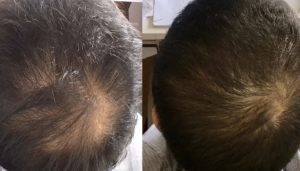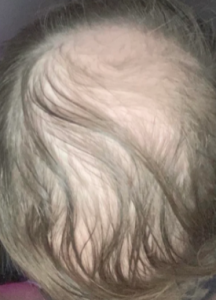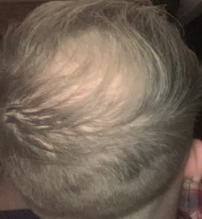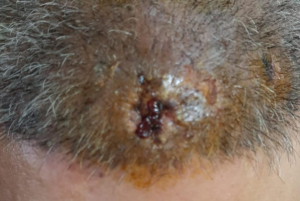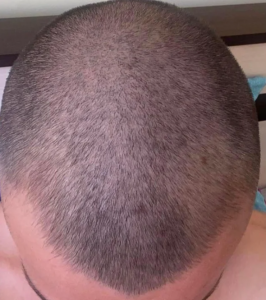Dr. Robert True wrote a very interesting article in the May/June issue of the Hair Transplant FORUM. He suggested that today’s surgeons should consider using the hair outside the SAFE DONOR ZONE. The rational is reasonable even though we expose our patients to some eventual loss of hair if their inherited hair loss pattern would become an advanced Class 6 or 7 pattern. I have always believed that this is a slippery slope because patients might get angry or depressed if they lost their transplanted hair earlier than their 60s of 70s or even later. The advanced Class 6 pattern as well as the advanced Class 7 pattern of balding, does occur in young men and if they were to progress to one of these patterns of balding (for example) two things would become evident: (1) if they had an FUE, the area that the hair came from would show the scars from the FUE punch and they would be very detectable to any observer, and (2) some of the transplanted hair would fall out after it grew for a while (because the hair that would fall out was genetically destined to die early.
The solution to the scars are relatively easy, just use Scalp Micropigmentation to hide these scars. The solution to the advancing hair loss would require a series of actions between the doctor and the patient at the time of the hair transplant. First, any patient willing to have this done knowingly (emphatic that the patient needs to understand this process 100%) then the surgeon can plan for future transplant loss by segregating the grafts as they are put in place. For example, the hairs that are removed from the 3 inch high PERMANENT DONOR ZONE (it is really 2 1/2 inches for advanced Class 7 pattern balding), could be placed in the front and top of the head (from the frontal hairline to mid-head) leaving the questionable hair that could be lost in the back of the head. If these hairs were well mixed together randomly at the time of the hair transplant, then the loss would be relatively uniform. As such, as the man got older (say 2-20 years after the hair transplant) and his eventually Class 7 pattern emerged (the example I am using), he would have had a fuller head of hair for as long as these non-permanent hairs lived. Nobody can predict the time until some or all of these non-permanent hairs will live, but hopefully the man would see a uniform thinning and eventual balding reoccurring at a time that is more acceptable to him.
Unfortunately, many surgeons today are doing such harvesting with FUE anyway without telling the patients that this may result in a loss of some of the transplant hair in the future. The doctors do this for many reasons, economic or otherwise.

